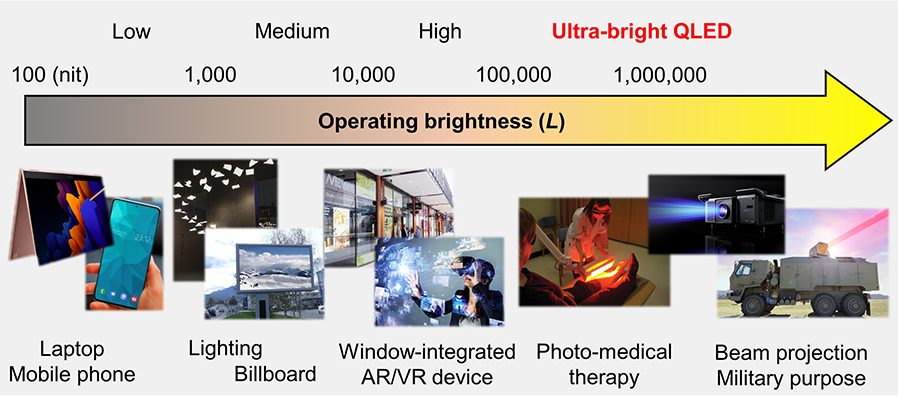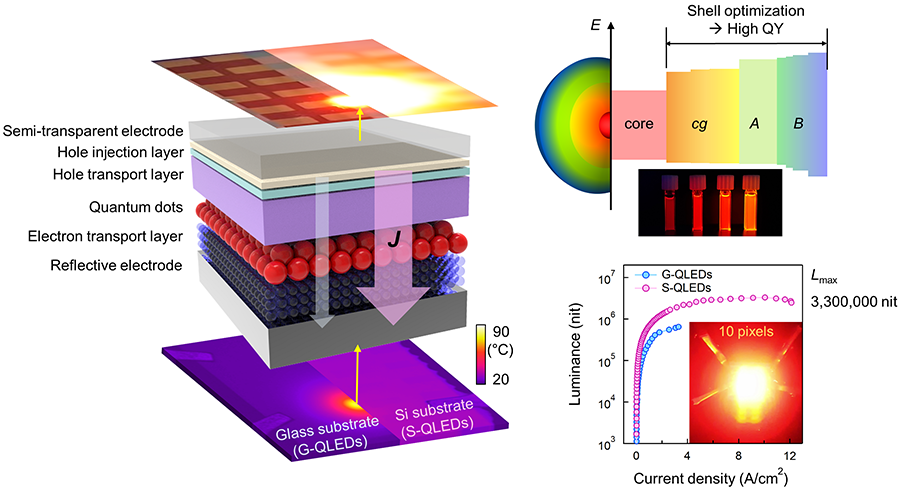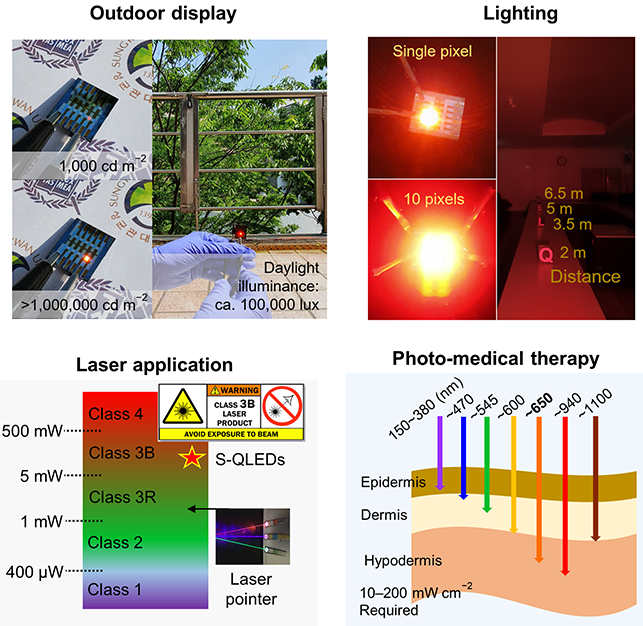Multilateral approaches for quantum dot materials and device structures withstanding high current density
Expect various applications of self-illuminating QLEDs as well as displays

From left, Professor Jeonghun Kwak of Seoul National University, Professor Jaehoon Lim of Sungkyunkwan University, Ph.D. student Taesoo Lee of Seoul National University, and Master’s student Byong Jae Kim of Sungkyunkwan University
A joint research team of Professor Jeonghun Kwak of the Department of Electrical and Computer Engineering at Seoul National University and Professor Jaehoon Lim of the Department of Energy Science at Sungkyunkwan University (First authors: Taesoo Lee and Byong Jae Kim) has developed quantum dot materials and device structure that can be driven stably even under high luminance conditions. The research team has also developed an ultra-bright red QLED that emits up to 3.3 million nits of light and operates stably even in high-brightness driving conditions of tens of thousands of nits.
Currently, the use of self-illuminating QLED is limited to low- and medium-brightness (hundreds to thousands of nits) displays such as TVs, laptops, and mobile phones. In order for QLED to be used in various fields, such as AR/VR devices, outdoor displays, lighting and phototherapy devices, high brightness level of tens of thousands of nits or more are required. Until now, QLED devices either did not work at a high luminance or showed very low device efficiency and stability.
In order to achieve a high brightness level, a high current density must be applied to the QLEDs. However, it was difficult to manufacture QLEDs with extremely high brightness; the deterioration of the device is accelerated due to the generation of Joule heat caused by the high current, and the luminous efficiency of the quantum dots is lowered due to the increase in the nonradiative Auger recombination due to the generation of multiexcitons.
The joint research team developed a material that can maintain luminous efficiency even at high currents by precisely controlling the structure of the shell constituting the quantum dots and thus effectively mitigating nonradiative Auger recombination that occurs at high current density regimes.
In addition, by using a silicon substrate with high thermal conductivity, the team suppressed the deterioration of the device due to Joule heat, and luminance was increased by optimizing the top-emission device structure to improve light outcoupling. Finally, through controlling the number of quantum dots inside the emission layer, the formation of multiexcitons with low luminous efficiency was minimized.
The QLED fabricated through a multifaceted approach from material to device exhibited a maximum luminance of 3,300,000 nit (Optical power of 50 mW) and a current efficiency of 75.6 cd/A. The expected half-lifetime at an initial brightness of 100 nits is a whopping 125,000,000 hours (about 14,269 years). This QLED shows the highest brightness, efficiency, and lifespan among others announced so far.
The research results are expected to contribute to practical research on QLED displays and be applicable to AR/VR devices or outdoor displays that require high luminance. In addition, the application range of self-illuminating QLED are expected to extend to not only display but also lighting, laser, photobiomodulation therapy, etc., and thus be applied to various light-related industries.
The research findings were published online on October 26, 2021, in <Advances Materials>, one of the most prestigious journals in materials, nanotechnology and science.
For further information, please contact Prof. Jeonghun Kwak.






